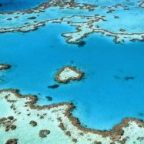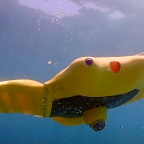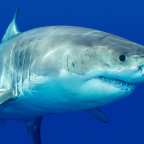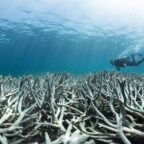
Declining stocks of Alaska pollock mean officials are likely to scale back 2009 catch limits for the largest U.S. fishery next month but scientists insist stocks are not in danger of collapse.
An expert panel recommended this week that fishermen in the Bering Sea cut their catch by 18.5 percent from this year’s harvest to 815,000 tonnes after several years of declining estimates for the fish.
Pollock is a billion-dollar industry, as well as a staple in the United States, thanks to frozen fish sticks and fish sandwiches sold by McDonald’s Corp and other fast food restaurants. The European Union, Japan and South Korea are big markets for Alaskan pollock.
The North Pacific Fishery Management Council will base its catch limit on the recommendation when it meets in December, and a major fishing group is prepared to accept the cut.
“We don’t second-guess the science,” said Jim Gilmore, spokesman for the At-Sea Processors Association. “It is what it is and our fishing companies live within those conservation limits.”
Pollock stocks have declined 20 percent per year since 2003, dipping to their lowest level since the late 1970s, according to an assessment from the U.S. National Marine Fisheries Service.
In 2008, there were 3 million tonnes of pollock near the bottom of the sea, down 30 percent from last year. Closer to the surface, there were 942,000 tonnes, down 47 percent from a year ago, and the lowest reading on record, the report said.
Scientists say much of the decline is because pollock offspring are not maturing to adults.
“The prognosis for 2010 is for improved stock levels because 2006 was a more successful year for the hatching and survival of young pollock,” Jim Ianelli, a stock assessment scientist at the Alaska Fisheries Science Center, said in a statement.
Some say more cuts needed
But some environmentalists believe catch limits should be more drastically cut in case stocks do not rebound and also in case data used to assess stocks is unreliable.
“Taking 815,000 tonnes next year won’t leave much fish in the water to rebuild the population, never mind to feed fur seals or endangered Steller sea lions that depend on pollock for food,” said John Hocevar, a marine biologist and director of Greenpeace’s oceans campaign.
The long-term fate of Alaska pollock remains uncertain as its dwindling stock size generates varied and conflicting interpretations about the stock’s future.
Stocks dipped in 1991 before rebounding to peaks in the mid-1990s so it is reasonable to assume they could bounce back from the current dip, said David Fluharty, a professor at the University of Washington and former member of the North Pacific Fishery Management Council.
Ray Hilborn, also a University of Washington professor, had a similar view. “You have to remember that we are coming off of the largest population in the historical record and what goes up has to come down at some point,” he said.
“Independent of fishing, it is always possible it will go back to the small size it used to be.”
The Bering Sea pollock fishery is the world’s largest food fishery, according to the At-Sea Processors Association, and fishing boats in the Eastern Bering Sea have caught an average of 1.39 million tonnes per year since 2001.
Some believe this is behind low pollock stocks since fishing boats spend the winter on prime spawning grounds.
“The stock is highly vulnerable at that time of year and this is the kind of fishing strategy that decimated cod spawning aggregations in the North Atlantic (in the 1990s),” said Ken Stump, policy analyst for the Marine Fish Conservation Network.
“They seem to be approaching a very dangerous level where the stock could actually collapse and the fishery could crash,” Stump said.












Social Profiles